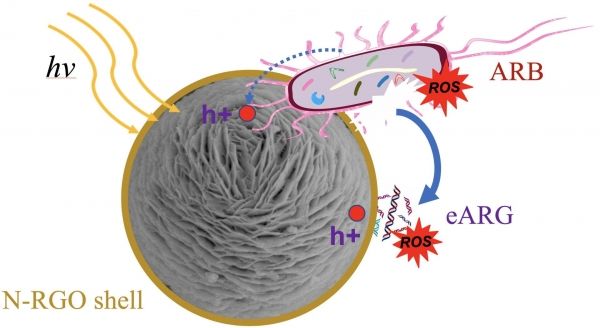A shield of graphene helps particles destroy antibiotic-resistant bacteria and free-floating antibiotic resistance genes in wastewater treatment plants.
Think of the new strategy developed at Rice University as "wrap, trap and zap."
The labs of Rice environmental scientist Pedro Alvarez and Yalei Zhang, a professor of environmental engineering at Tongji University, Shanghai, introduced microspheres wrapped in graphene oxide in the Elsevier journal Water Research.
Alvarez and his partners in the Rice-based Nanosystems Engineering Research Center for Nanotechnology-Enabled Water Treatment (NEWT) have worked toward quenching antibiotic-resistant "superbugs" since first finding them in wastewater treatment plants in 2013.
"Superbugs are known to breed in wastewater treatment plants and release extracellular antibiotic resistance genes (ARGs) when they are killed as the effluent is disinfected," Alvarez said. "These ARGs are then discharged and may transform indigenous bacteria in the receiving environment, which become resistome reservoirs.
Read more at Rice University
Image: Improved bacterial affinity and reactive oxygen species generation enhances antibacterial inactivation in wastewater by graphene oxide-wrapped nanospheres developed by scientists at Rice University and Tongji University, Shanghai. Antibiotic resistance genes (eARG) released by inactivated antibiotic resistant bacteria (ARB) in the vicinity of photocatalytic sites on the spheres facilitates their degradation. (Credit: Alvarez Research Group/Rice University)


